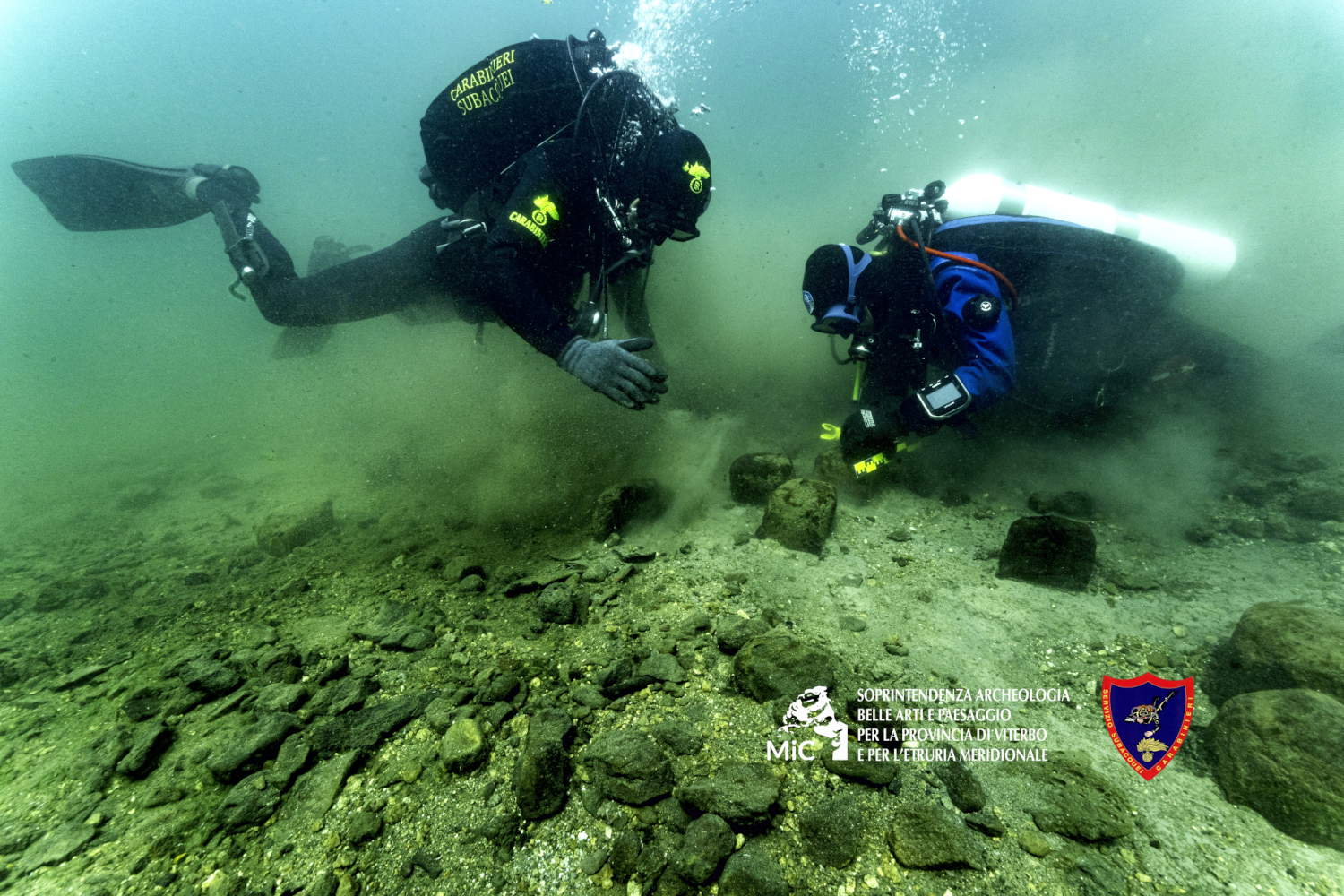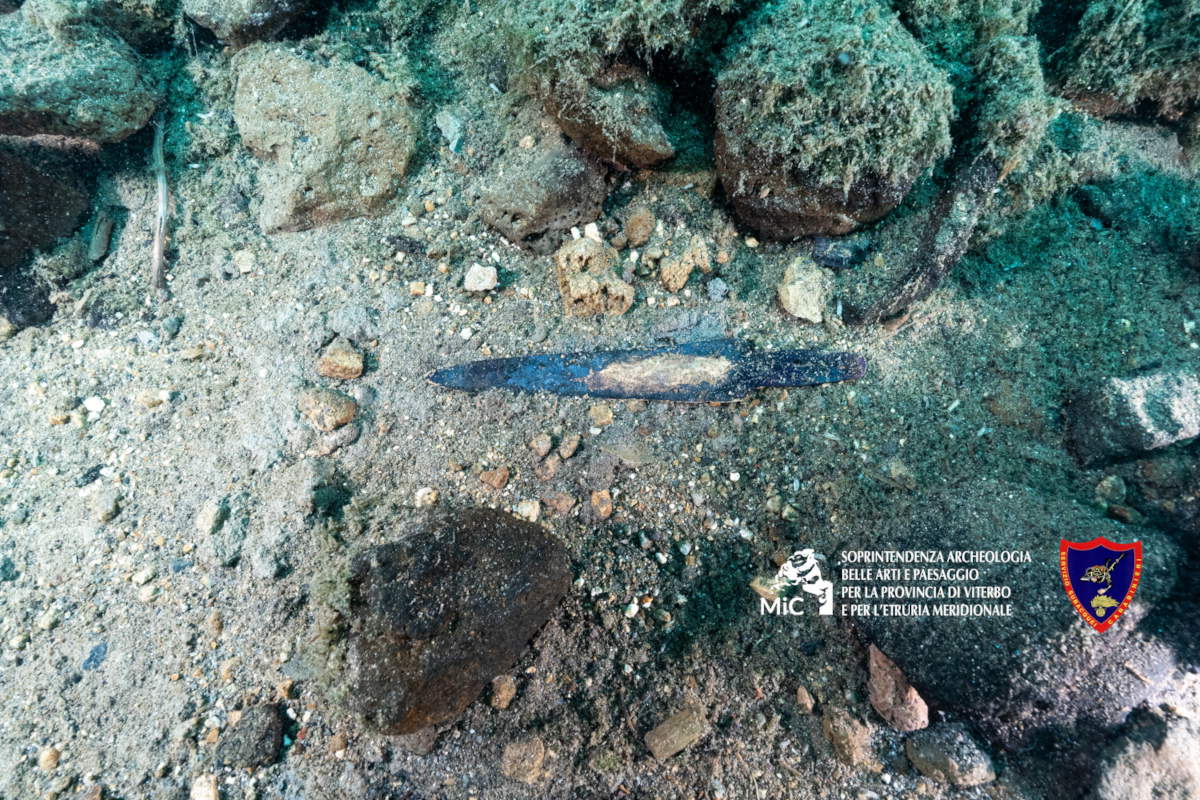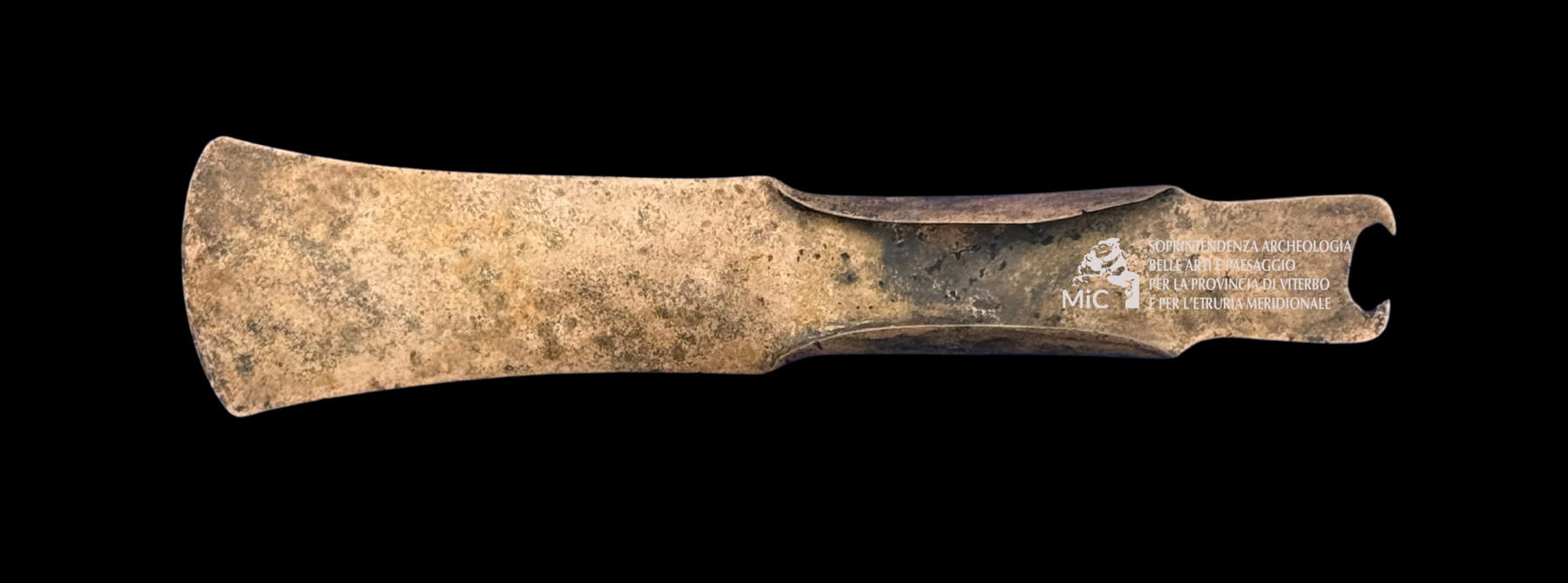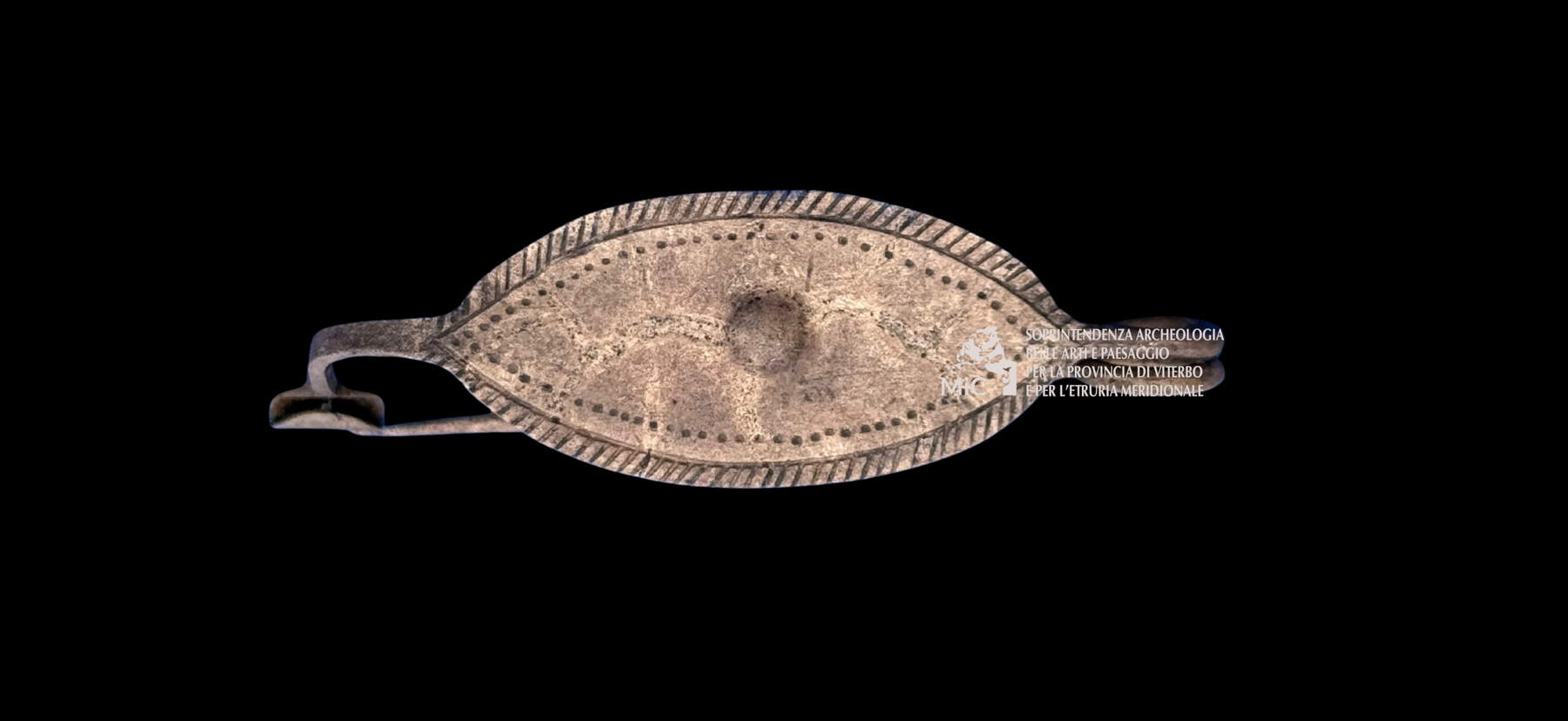The first phase of the new campaign of underwater archaeological investigations in Lake Mezzano, back in operation after a long period of suspension, has been concluded. The small body of water of volcanic origin, set in the Latera caldera in the heart of Tuscia viterbese, thus returns to the center of attention for the importance of its submerged pile-dwelling settlement, datable between the end of the Ancient Bronze Age and the Recent Bronze Age (about 1700-1150 B.C.). The intervention, promoted by the Soprintendenza Archeologia, Belle Arti e Paesaggio for the province of Viterbo and Southern Etruria, was conducted by the Servizio Archeologia Subacquea together with a multidisciplinary team composed of archaeologists, restorers, specialized technicians and with the collaboration of the Aliquota Carabinieri Subacquei of Rome. The goal is to document, protect and enhance one of the most significant protohistoric sites in central Italy.
So far, more than 600 piles emerging from the clayey seabed have been mapped over about a third of the known area of the settlement. These data will offer valuable elements for reconstructing not only the structure of the settlement, but also aspects of the daily life of a Bronze Age community.
After the morphobathymetric survey of the entire basin, targeted work was carried out to better clarify the formation of the archaeological deposit, the understanding of which is essential for correctly interpreting the finds discovered in a still partially unknown context.
The investigations also involved areas where the ancient deposit is still preserved, covered by a thick layer of compact clay, removed with the use of sorbonne in conditions of reduced visibility and very cold water. It turned out that not everywhere the absence of visible piles corresponds to an absence of materials: in many cases, the archaeological deposit lies below more recent clay levels, accumulated on an irregular and uneven seabed.
From the study of the depths, ranging from 2.5 to 10 meters, it is inferred that the lake settlement followed the changes in the lake level over time, over the course of about six centuries. The material found-fallen or rolled from a likely wooden structure, some of which was also burned down-shows a consistent stratification: the oldest finds are in the lower layers, the most recent ones near the surface. No distinct habitation areas seem to emerge, but rather a continuous distribution of piles and materials, which occupy at least a quarter of the lake following a “concentric” rather than linear pattern.


Among the most significant finds is a substantial group of bronze artifacts, found in areas characterized by the presence of lava stones-perhaps ancient landslides-under which numerous piles were identified almost down to the level of the present shoreline. There are more than 25 bronze objects in an excellent state of preservation, thanks to the contact with the upper part of the clay that prevented their oxidation.
Prominent among them are winged axes, spearheads, fibulae, rings, a perfectly preserved pin and sickle, along with fragments of “panelle,” or bronze ingots, suggesting the presence of ancient metallurgical workshops. Also particularly notable was the discovery of a pierced stud decorated with a solar motif, of great symbolic value. In the areas where the metals were found to be in secondary deposits, that is, in a more superficial position, the use of the metal detector in collaboration with the underwater Carabinieri proved decisive, both in detecting new finds and in preventing possible clandestine excavation actions. Thanks to the immediate intervention of restorers, all artifacts were protected and consolidated to preserve their original appearance. Some show traces of burning, possibly related to the collapse of burned wooden structures.
The next excavation campaigns will aim to complete the mapping of the piles and link ceramic and metal materials to different areas of the site, based on depth ranges. Stratigraphic excavation will also clarify the formation of deposits, in many cases well sealed by layers of compacted clay.
It cannot be ruled out that some of the more superficial materials, found on top of the clay, may instead come from the shores of the lake, where the Olpeta outfall still continues to erode ancient settlement levels previously reported.


 |
| Underwater research resumes in Lake Mezzano: new discoveries on Bronze Age pile-dwelling village |
Warning: the translation into English of the original Italian article was created using automatic tools. We undertake to review all articles, but we do not guarantee the total absence of inaccuracies in the translation due to the program. You can find the original by clicking on the ITA button. If you find any mistake,please contact us.